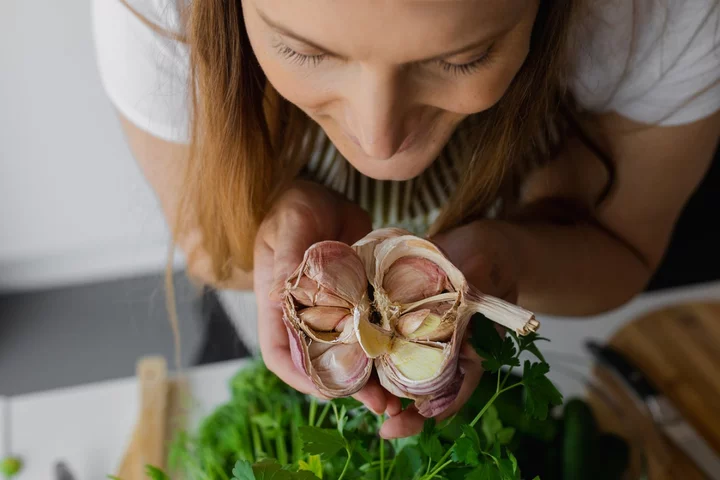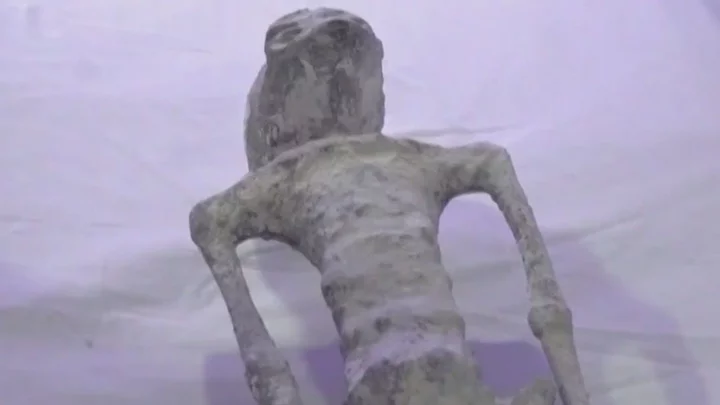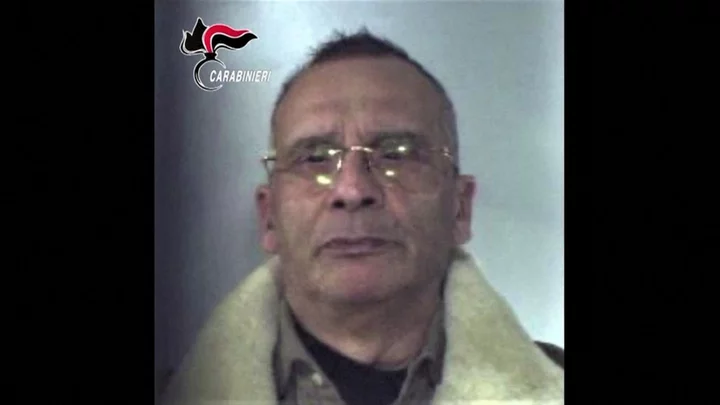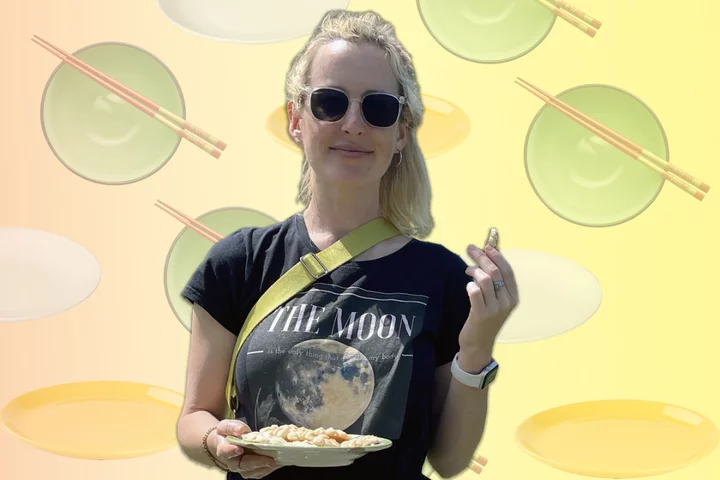
Some players rendered it 'unplayable': Payday 3 developer 'working tirelessly' to fix launch failures
'Payday 3' developer Starbreeze is working hard to resolve the infrastructure issues.
1970-01-01 08:00

The cure for smelly garlic breath? Turns out, it’s simpler than you think
It’s hard to resist garlic sometimes, but its pungent smell can often last long on the tongue. So what causes it, and how can we get rid of it? Garlic contains a compound called sulfur volatiles that can cause a bad odour after being eaten. Researchers wanted to better understand how yoghurt and its components can eliminate or reduce such strong odours. For the study, researchers from the Department of Food Science and Technology at Ohio State University, Columbus tested the garlic deodourising capabilities of yoghurt and its individual components of water, fat and protein to see how each stood up to the smell. As a result, the team found both fast and protein were effective at trapping garlic odours, leading the scientists to suggest high-protein foods may one day be formulated specifically to fight garlic breath. “High protein is a very hot thing right now – generally, people want to eat more protein,” said senior study author Sheryl Barringer, professor of food science and technology at the university. “An unintended side benefit may be a high-protein formulation that could be advertised as a breath deodorizer in addition to its nutritional claims,” she said. “I was more excited about the protein’s effectiveness because consumer advice to eat a high-fat food is not going to go over well.” In the lab experiment, researchers placed equal amounts of raw garlic in glass bottles and confirmed the smell of the garlic was released in concentrations that would be detected by the human nose. Scientists measured the levels of volatile molecules in gaseous form present before and after each treatment. It was revealed that garlic alone reduced 99 per cent of the major odour-producing raw garlic volatiles. When introduced separately, the fat, water and protein components of yoghurt also had a deodorising effect on raw garlic, but results showed fat and protein performed better than water. Looking at fat’s performance, a higher quantity of butter fat was more effective at deodorisation. The proteins which were studied included different forms of whey, casein and milk proteins, all of which were effective at deodorising garlic. This may be because of their ability to trap the volatile molecules before they are emitted into the air. A casein micelle-whey protein complex performed the best. “We know proteins bind flavour – a lot of times that’s considered a negative, especially if a food with high protein has less flavour. In this case, it could be a positive,” Barringer said. Additional experiments that involved changing the pH of the yoghurt to make it less acidic (4.4 pH to 7 pH) actually appeared to lower the yoghurt’s deodorisation effect on the garlic. However, changing the pH of water did not seem to make any difference on the water’s deodorization effect. “That’s telling me it goes back to those proteins because as you change pH you change the configuration of proteins and their ability to bind. That said we definitely should be looking at these proteins,” Barringer said. “It probably depends on the protein, as well, because different proteins react differently to pH. So that may be an important thing as we look at other proteins for their garlic deodorization effect.” The team also tested the deodorising effect of yoghurt and its components on fried garlic, in the process they found that drying garlic alone can significantly reduce garlic odour. Yoghurt and its individual ingredients neutralised a lower percentage of volatile compounds of fried garlic compared to raw garlic. Study authors think this may be because there were fewer volatiles to trap than were present in the raw cloves. The findings have provided a foundation for future studies on proteins that might help fight the garlic breath. In the meantime, Barringer predicts that Greek yoghurt, with a higher protein profile than the whole milk plain yoghurt used in the study, may be particularly effective at getting rid of garlic breath. Fruit-flavoured yoghurts will probably work, too, she said – and whatever is used, it must quickly follow ingestion of raw garlic. “With apples, we have always said to eat them immediately,” she added. “The same with yoghurt is presumed to be the case – have your garlic and eat the yoghurt right away.” The study was published in the journal Molecules. Read More 11 best mouthwashes that will keep your mouth minty fresh Women less likely than men to receive CPR from strangers, study finds Study finds toxic ‘forever chemicals’ may be ‘intentionally added’ to some period products Teenager’s death after drinking too much water was ‘preventable’ Could bats hold the secret to beating Covid and cancer? Groundbreaking migraine treatment offers ‘new hope’ for patients
1970-01-01 08:00

Thailand: Man charged with beating his three children to death
Police suspect the man also killed two more of his children from a previous marriage.
1970-01-01 08:00

People don’t become adults till they’re in their 30s, research suggests
Ever felt a bit immature? Well, don't worry. People don't become fully "adult" until they're in their 30s, according to experts. While, in the UK, we legally become adults at 18, research suggests people in their late teens are still going through significant changes in the brain. Professor Peter Jones, from Cambridge University, told the BBC back in 2019: "What we're really saying is that to have a definition of when you move from childhood to adulthood looks increasingly absurd. "It's a much more nuanced transition that takes place over three decades." He added: "I guess systems like the education system, the health system and the legal system make it convenient for themselves by having definitions." When you reach 18, you can vote, buy alcohol, get a mortgage and are also treated as an adult if you get in trouble with the police. Despite this, Professor Jones says he believes experienced criminal judges recognise the difference between a 19-year-old defendant and a "hardened criminal" in their late 30s. "I think the system is adapting to what's hiding in plain sight, that people don't like (the idea of) a caterpillar turning into a butterfly," he said. "There isn't a childhood and then an adulthood. People are on a pathway, they're on a trajectory." Meanwhile, in an interview with PBS, Dr Jay Giedd, chair of child psychiatry at Rady Children’s Hospital-San Diego, said that the development of the prefrontal cortex, the part of the brain responsible for social interactions, regulating emotions, controlling impulsive behaviour, and assessing risk, doesn’t stop at age 18. Instead, he said it takes almost 25 years. So give yourself a break unless you are in your 30s. And if you are? Grow up. Sign up to our free Indy100 weekly newsletter Have your say in our news democracy. Click the upvote icon at the top of the page to help raise this article through the indy100 rankings.
1970-01-01 08:00

Evergrande's plan to stave off collapse is running into trouble
Evergrande's plan to restructure its massive debts is in trouble because of a regulatory probe into its main subsidiary, the embattled Chinese developer said Sunday.
1970-01-01 08:00

Resurfaced video explains what the Mexican 'alien corpses' really are
The presentation of two “ancient alien bodies” to Mexico’s congress earlier this month was touted as a historic, world-changing moment. And yet, no sooner had ufologist Jaime Maussan hailed the mysterious pair as humankind’s most significant discovery to date than experts and netizens resoundingly debunked the claim. Maussan declared that the tiny mummified figures, with elongated heads and three fingers, were discovered buried between the Peruvian cities of Palpa and Nazca in 2017. He even published scientific analysis purporting to prove that the “corpses” were some 1,000 years old and not related to any known Earthly species. And yet, countless commentators have since exposed the whole thing as a long-discredited and possibly criminal hoax. Now, a resurfaced video that has been doing the rounds on social media suggests that the two bodies are, essentially, a couple of Frankenstein’s monsters, made up of a “hodgepodge of human and animal bones.” In the clip, which has been widely shared on Reddit, the commentator points to one of the “specimens” and notes that “instead of humeri (upper arm bones), she sports femurs, or thigh bones”. “Her legs are even more baffling,” he continues, using X-ray-style images to illustrate. “One of the thigh bones is actually a femur, only facing the wrong way round, while the other one is a tibia and they're completely mismatched with the hip bone. There's no joint there at all. “The poor humanoid wouldn't have made a single step.” He then highlights other asymmetries, saying “some of the bones are simply chopped off”, while the fingers are “a total mess”. “The first pseudo phalanges are facing in different directions on her left and right hands,” he explains, suggesting that the creators “just forgot to turn them the right way”. He then cites French palaeontologist Julian Benoit, who concluded that whoever “crafted” the humanoid mummies used skulls of small mammals for their heads, such as lamas or alpacas. “The whole facial part of the skull was broken off, leaving only the braincase,” he says. “The skull was then rotated, so its back part faces forward – the reptiloid’s face is actually the back of [the animal’s skull]”. Reddit - Dive into anything from Damnthatsinteresting The excerpt, which was apparently taken from a 2018 episode of French news show ‘66 Minutes’ has encouraged further derision of Maussan’s grand claims. One commentator wrote in response to the original revelations: “My first thought was ‘these look like ‘aliens’ so I highly doubt they’re aliens’ lol. [T]here ain’t no way we’re gonna find some that look like the ones we imagined and conjured up.” And yet, Maussan, 70, was unflinching in his declaration that his crusade to bring awareness to the “corpses” is “the most important thing that has happened to humanity.” "I believe that this phenomenon is the only one that gives us the opportunity to unite," he told reporters from his office in Mexico City. Meanwhile, Elsa Tomasto-Cagigao, a respected Peruvian bio-anthropologist, told Reuters she was frustrated that such claims are still being given publicity, citing similar alleged discoveries that were found to be frauds. "What we said before still stands, they are presenting the same rehash as always and if there are people that keep believing that, what can we do?" she said. "It is so crass and so simple that there is nothing more to add." Sign up for our free Indy100 weekly newsletter Have your say in our news democracy. Click the upvote icon at the top of the page to help raise this article through the indy100 rankings.
1970-01-01 08:00

Chandrayaan-3: Hopes of Moon lander reawakening dim as India awaits signal
Scientists tell the BBC that chances of of the lander's reawakening are "dimming with each passing hour".
1970-01-01 08:00

Expend4bles director hints at fifth movie
Expend4bles director Scott Waugh has hinted there's a good chance the action franchise will return for a fifth installment without leading man Sylvester Stallone
1970-01-01 08:00

Messina Denaro: Notorious Italian Mafia boss dies
The 61-year-old, who spent decades on the run, boasted that he could "fill a cemetery" with his victims.
1970-01-01 08:00

The dish that defines me: Rosie Grant’s gravestone recipes
Defining Dishes is an IndyEats column that explores the significance of food at key moments in our lives. From recipes that have been passed down for generations, to flavours that hold a special place in our hearts, food shapes every part of our lives in ways we might not have ever imagined. I run a TikTok called @ghostlyarchive, where I share recipes from gravestones mainly across the US that I make and eat. It all started in 2021, while the Covid pandemic was still ongoing. I was studying to be a librarian. One of my classes was about social media and we were tasked with creating a fresh social media account and had to pick a niche. At the same time, for the same library programme, I had to choose a library or an archive to intern with. I found a fairly virtual internship that let me do things safely outside and in person – which was at a cemetery. I ended up interning in a cemetery archives at a congressional cemetery in Washington DC, and this ended up being my social media niche, too. I chose TikTok, which I was new to at the time, and the class required me to post something about my niche every day for three months. So I learnt that there was a whole section of TikTok called “GraveTok”, where there were gravestone cleaners, preservationists and historians posting content, as well as people who just really loved cemeteries and the storytelling around them. I was posting everyday, and when you post everyday, eventually you’re just sharing anything that you come across that’s vaguely interesting. So at first, it was just about the internship, then I moved on to featuring other gravestones in DC. I started sharing any interesting grave or memorial that I was learning about, and that’s how I heard about Naomi Odessa Miller-Dawson’s grave recipe. Naomi has a really beautiful gravestone in Brooklyn, New York. It’s shaped like an open cookbook and features ingredients for her signature spritz cookies, a type of butter cookie that is made using a cookie press. I remember seeing a photo of Naomi’s gravestone and wondering what they tasted like. Because it was during pandemic times, when we had a lot more free time, I had been learning how to cook more and became really curious about this recipe. So I made them, shared the process on TikTok, and it exploded overnight. People were really intrigued by the grave recipe. In the comments, they were asking questions like: “I didn’t know this, who makes these? Are there other gravestones like this?” Or sharing their own experiences saying: “My mum has a really good recipe” or “This is how I make my cookies”. After that, I learned more about who Naomi was and while I was doing that, I was learning about other gravestones with recipes on them that were featured in local blog posts or posted to Twitter, or even on local news. That’s where the project originated. I’ve now made 23 grave recipes, but that first one was such a journey and I’ll remember it forever. The very first time I made the spritz cookies, I baked them incorrectly because there were no instructions on the gravestone and I didn’t know what a spritz cookie was. I made them in little circles and later learned from people commenting on the video that I was supposed to use a cookie press, so I bought one and made them again. They are really beautiful, delicate little butter cookies that you can decorate. I initially thought they were a sort of sugar cookie, because that’s what the ingredient list sounded like to me, but when I figured out what they were and the proper way to make them, it was such a revelation. Eventually, I met Naomi’s family and made her recipe with them. It was so interesting to learn about her family. I felt very honoured that they welcomed me and took the time to talk about who this woman was and what she meant to them. Naomi was the matriarch of her family and an excellent cook. No one was allowed to bring takeaway food into her home because she would say: “I can cook better than anything you can get at a restaurant.” Her son talked about sitting at the counter in her kitchen, just waiting for the cookies to come out of the oven so he could have a freshly baked one immediately, and he did the same thing when we were cooking together. I often think about how the recipes that get put on these graves are such a big part of family food traditions, which is very cool to me. When I met Naomi’s son and granddaughter, who now live in Pennsylvania, we drove past her old house and visited her grave in the cemetery and heard stories about her. I felt close to Naomi, even though I’d never met her. There’s something about food that connects you to so many memories and people of the past. For example, I’ve never met my great-grandparents, but my mother still cooks her grandmother’s recipes and she still talks about this person when she cooks them. It’s a really interesting connection to the tastes, smells and sights that my great-grandmother, who was an Irish immigrant, had. Weirdly, she is actually buried in the same cemetery as Naomi! There is something about food that makes us feel more present with our deceased loved ones. I don’t know what it is, but food has this amazing quality to do that. Other grave recipes that I’ve tried and continue to make include a fudge recipe from Utah and a snickerdoodle recipe from California. I’ve also made two grave recipes from Israel, which were both written in Hebrew. One of them just had the ingredients on it and his widow told the press that if you know how to cook, you’ll know what to do with them. Well, apparently I don’t know how to cook because I had no idea! Luckily, I work part time at the American Jewish University and their librarians both read and speak Hebrew, so they helped me translate the grave. They decided it was a type of mildly sweet yeasted bread and I’ve made it a few times now, it’s really delicious. My friends have asked for that one very frequently because it’s really an objectively good bread. Most of the recipes that end up on graves tend to be baked goods, or sweet recipes, there are a lot of cookies, cakes, pies, cobbler, ice cream. There are a few savoury ones, like a meatloaf, two cheese dips, and a chicken soup. But the rest of them are pretty much desserts. I think they are chosen according to what is comforting for those who are still around. They think: “My grandma made this thing and I immediately associate that thing with her, or my mum or dad, or whoever”. They have a signature dish and get excited when they think about it, and I think that’s how they choose what to put on the grave. Rosie Grant is an archivist currently living in Los Angeles. She visits cemeteries with grave recipes whenever she travels, and shares her process for making these recipes on her TikTok, @ghostlyarchives. Read More The dish that defines me: Michele Pascarella’s Neapolitan ragu The dish that defines me: Evelin Eros’s rum cake The dish that defines me: Mallini Kannan’s baked honey-soy salmon Is there such a thing as British pizza? Courgette season is nearly over – here’s three ways to make the most of them How to cook to keep your gut healthy
1970-01-01 08:00

Evergrande's debt revamp roadblock hits China property investors' sentiment
HONG KONG (Reuters) -China Evergrande Group's latest trouble in firming up a long-pending debt restructuring plan led to a sell-off
1970-01-01 08:00

Patrick Mahomes, Andy Reid go to bat for Jawaan Taylor with refs nitpicking
Kansas City Chiefs RT Jaawan Taylor was called for another illegal formation penalty on Sunday. His QB came to his defense.
1970-01-01 08:00
